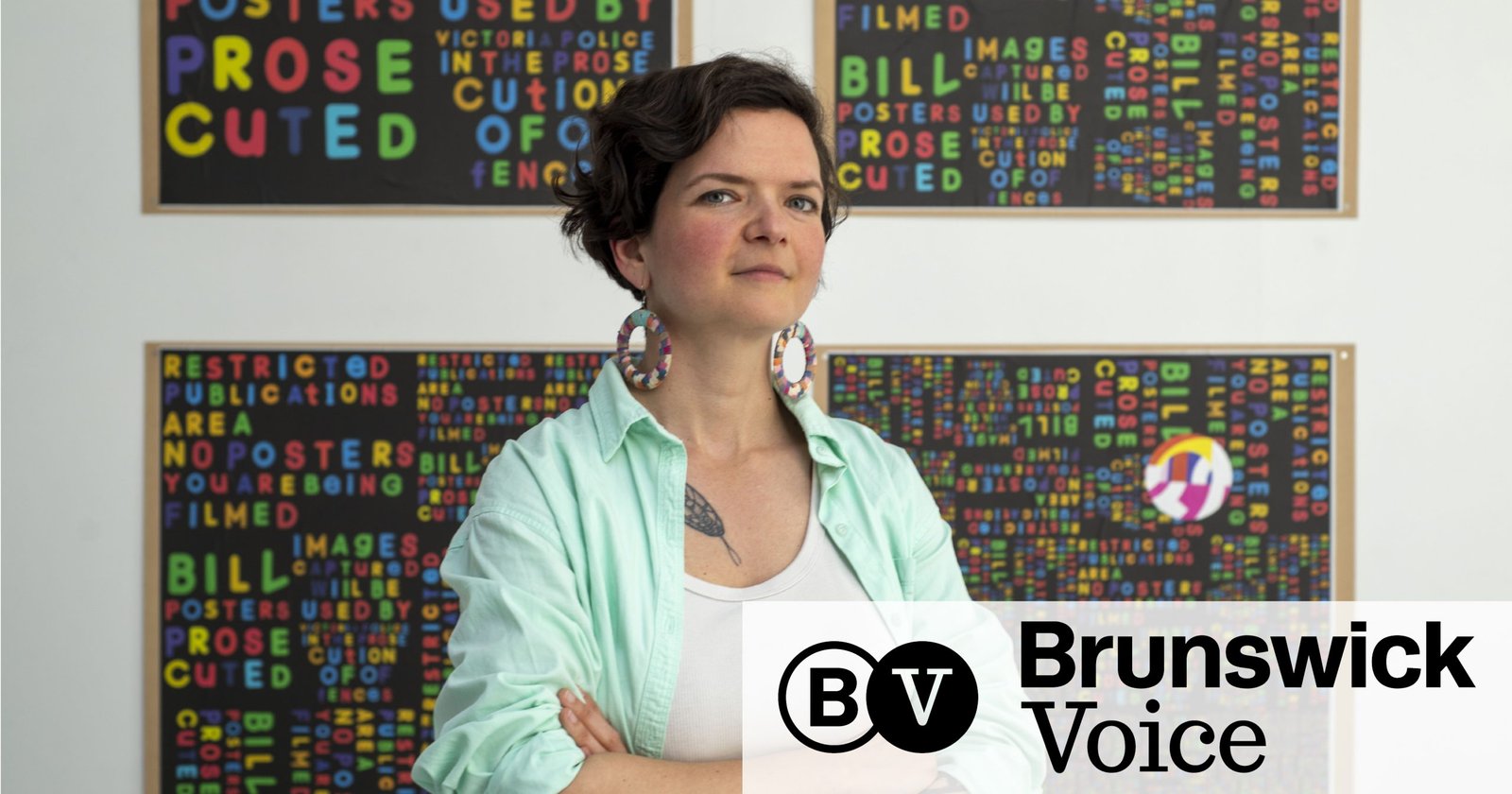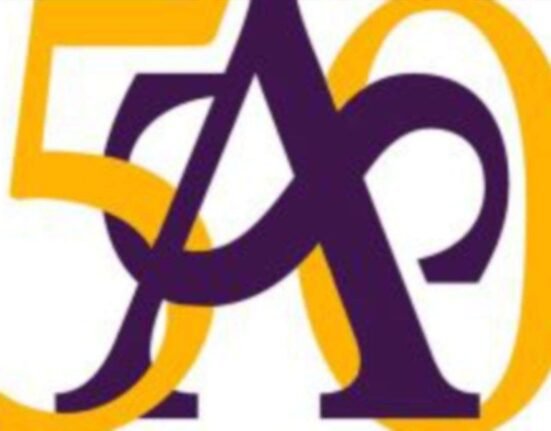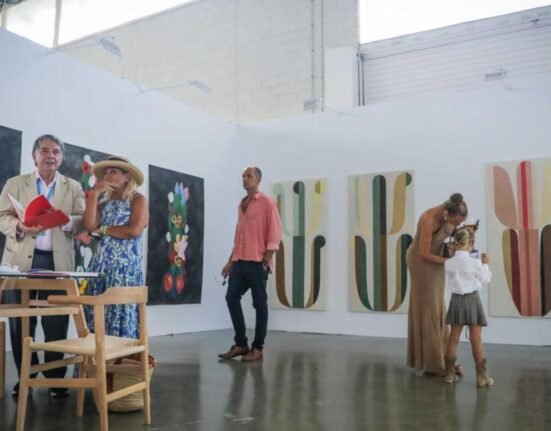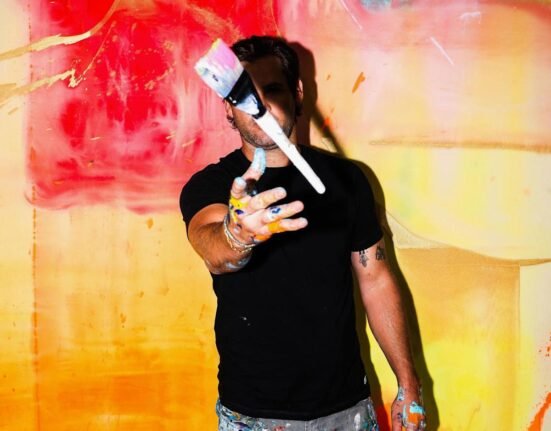News / Arts
How 2528 words help to tell the story of a suburb

Mark Phillips
IT takes a special kind of dedication to write down every word on every surface on Sydney Road, Brunswick.
Sabina Andron did just that over a three month period last year, meticulously cataloguing 2528 words she came across on the 2.5 km between Brunswick Road and Moreland Road.
It could have ended there with the words scrawled in her notebook had Andron not come up with the idea of collaborating with 13 artists to bring her research to life.
The result is a new exhibition, Unredacted City, at Sorse Gallery in Colebrook Street until November 3.
Each artist has interpreted Andron’s research in a different way as an A0 poster sized work, some using all 2528 words, others just a handful of them.

Andron, an architectural historian and urban scholar who is originally from Romania, began her research in July last year as a way of discovering her new neighbourhood soon after she arrived here for a research fellowship at Melbourne University.
Andron’s field of study for the past decade has been graffiti and street art and their influence on a city’s culture, and she quickly discovered that Melbourne had a unique tradition of street posters.
“When I moved here without knowing anyone, basically, I was saying to people at work that I feel good because I’m making the city my friend, you know, like I’m just befriending Melbourne, and this was part of it, getting to know the city, literally.”
Andron would record not just the official signage on buildings, but key words on any graffiti, stickers or posters she came across. She also took notes from street furniture, lamp posts and even the footpath and came to realise that what she was compiling was “the self-written archive of the city”.
After each foray into Sydney Road, Andron would transcribe her notes onto her computer in all capitals, and arrange the words she had discovered into alphabetical order. Themes began to emerge from words that were repeated several times, such as ‘kebab’ and ‘green’.
She visited her last block of Sydney Road in October last year.
“When I had all of it, I thought, this can’t just stay in this small book, I want to show it somehow,” Andron said.
“Initially I thought this could make a cool exhibition just to print all the names on the wall. But then I thought, well, unless you’re a super geek and obsessed with this as much as I am, it’s probably not going to be that interesting an experience as a visitor.
“So then, talking to some artist friends – because I’m not an artist, right – this was the concept that we landed on, and then some people agreed to take part in the show and here it is.”
Andron’s instructions for each artist was to interpret her research in whatever way they wanted.
“I gave them a brief which was to use as many of these words as they want, it could be just one, or it could be several, and work within the format of an A0 poster,” Andron said.
“That was because I think that street posters give so much character to Melbourne.”

The works that make up the exhibition are varied, from digital collages by Nicky Tsekouras to a few words sown onto a plain cotton sheet by Miriam Patience. Michael Fikaras has reinterpreted Andron’s work as a series of large cartoon panels, while Chris Parkinson used fridge magnets to reconstruct official warnings against bill posting as the basis for a series of prints.
Adrian Tanner, who works as a graffiti removalist, has contributed two sheets of corrugated iron onto which has been sprayed and painted geometric patterns and tags.
Visitors to the gallery are encouraged to interact with some of the works, by for example scratching their own message onto Camila Camila González Benöhr’s black paint surface.
At the end of the gallery are dozens of discarded wall posters that have been peeled off building walls and were donated by street media company Plakkit.
Unredacted City is an extension of Andron’s field of study and although it is full of levity, there is a serious aspect to the research behind the exhibition.
Andron is fascinated by the layers of history that are revealed by street signage, both official and that not sanctioned by government and authorities.
“This is not something that one single entity controls,” she said.
“This is all the voices, and some of them are authorised, some aren’t. Some of them are welcome, some aren’t, but they’re all present there.
“Once you remove the bias of what you think is acceptable, and just see the text, just see the writing, you realise there’s so much culture there that you maybe choose to ignore or disapprove of when the street captures all of these different voices and it stores them.”
Unsurprisingly, she is a fierce defender of graffiti, tagging and street art, all which are expressions of public life.
She believes the campaign to remove them is futile and a reflection of a mildly hypocritical attitude of councils and other authorities of celebrating “official” street art, while frowning upon graffiti and tagging.
“Why is there tagging? Because there’s empty shops, most of the tagging is on empty shops. And the problem of the empty shops is not because of the tags, but in a way, the tags come to occupy a space that is vacant, and they give it life … the tags aren’t what drive customers or businesses away, but they’re the easy scapegoat.”
Unredacted City, produced by Sabina Andron and baprojects is showing at Sorse Gallery, 31 Colebrook Street, until Sunday, November 3 (gallery hours are Friday to Sunday, 12-5pm). Sabina Andron will be holding a Q&A at 1pm on November 2.
Support independent local journalism
We are an independent hyperlocal news organisation owned and run by the people in your community. With your support, we can continue to produce unique and valuable local journalism for Brunswick and the inner north of Melbourne.
}
button:hover {
color: #000000;
background-color: #ffffff;
border: 2px solid #000000;
}







